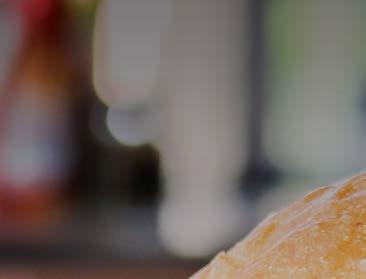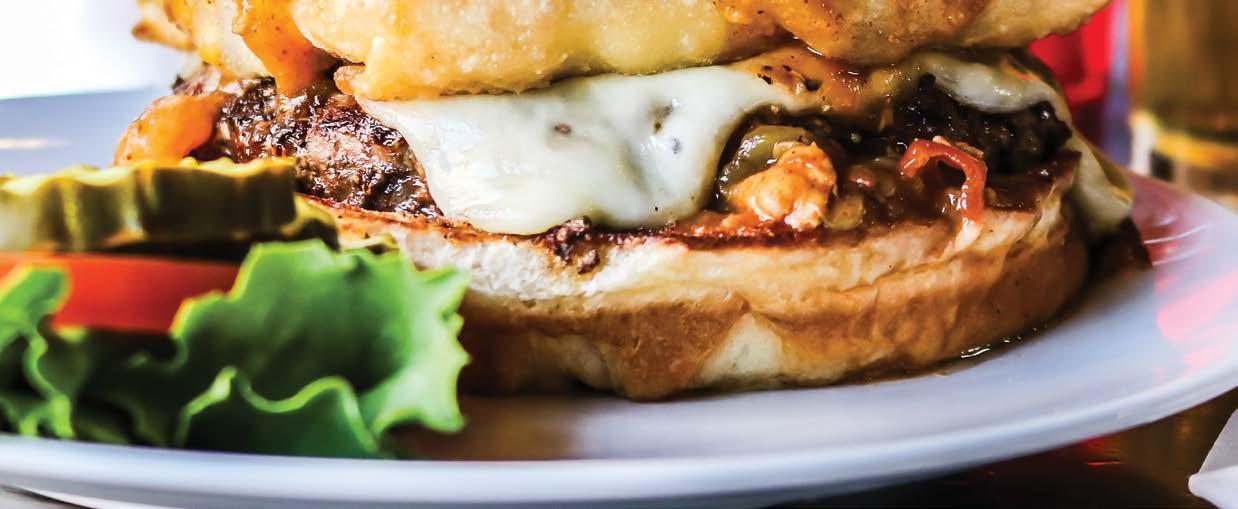
8 minute read
AMERICAN QUEER LIFE: NOTES ON NOTES ON “CAMP
Notes on Notes on “Camp” Life American Queer
by Rick Kitzman
Camp is like porn: I know it when I see it. I do not refer to outdoor experiences requiring tents, bear spray, or turkey jerky, but to the urban, esoteric, cultural trope often synonymous with queer expression. Like Carmen Miranda’s tutti-frutti hats, pink flamingos, black velvet paintings. Anyone can camp-ify, and anything can be camp-ified. But does camp matter? Quelle horreur! If it does, how, why, to what purpose? For those seeking answers (and a great holiday stocking stuffer), there’s no better source than “Notes on ‘Camp,’” the 1964 essay by Susan Sontag. She was a writer, filmmaker, philosopher, teacher, political activist, and from 1989 until her death, partner to photographer Annie Liebovitz. Quoting her muse Oscar Wilde throughout, Sontag wrote her dissection of this modern artistic taste as 58 notes, brilliant and brief. For example:
8. Camp...is the love of the “off” of things-being-what-they-are-not.
Search for the worst album covers, and The Shaggs or Faith Tones will appear in all their off-ness along with dozens of others. (Ya gotta see the Tones’ Jesus Use Me cover with the faces of His Orangeness, Kellyanne, and Mikey replacing the sisters.)
19. Pure examples of camp are unintentional; they are dead serious.
One of the purest is the 1981 film Mommie Dearest starring Faye Dunaway in a Grand Guignol performance as über-star Joan Crawford. Crouching on her haunches, Mommie leers like Karen Black as the Zuni fetish doll in Trilogy of Terror, wire hangers and cold cream replacing Black’s pointy teeth and butcher knife. This classic, camp movie generated gobs of guffaws and golden fodder for drag queens, Halloween costumes, and creative videographers— the exact opposite of the filmmakers’ intentions.
25. The hallmark of camp is the spirit
of extravagance. Camp is a woman walking around in a dress made of 3,000,000 feathers. And that dress was probably at 2019’s Met Gala, “Camp: Notes on Fashion.”
41. The whole point of camp is to
dethrone the serious. Randy Rainbow has made a career dethroning His Orangeness with humor and clever images. He’s never cruel, but knows how to zap the power of cruel subjects: with laughs, exposing His Orangeness like the deluded emperor who wore no clothes. Rainbow’s pink cat-eye glasses? So camp.
52. Camp is a solvent of morality. It neutralizes moral indignation,
sponsors playfulness. The musical Hairspray deals with race, La Cage Aux Folles with homophobia. In both examples, the bigoted characters lose their battles, not in bitter ways, but with lots of fun, great costumes and music along their merry, consciousness-raising way. Sontag uses many descriptors: naïve, anti-serious, playful, kitschy, gaudy, pretentious, frivolous, exaggerated, extravagant, vulgar, non-judgmental, generous. In her debate between high and low art, she argues camp makes “good taste of bad taste.” Camp “is good because it’s awful.”
In #50, Sontag acknowledges how “an improvised, self-elected class, mainly homosexuals” declared themselves “aristocrats of taste” and filled an aesthetic void. Maybe this validates the somewhat pejorative truism: “It takes a fag to make something pretty.”
Along with beauty in an often ugly and serious world, laughter is what queers were going for with outrageous creations and silly observations. Their lives were fraught with so many dangers—arrest, bodily harm, loss of job, family, housing, life itself—that the courage to have fun and dress up became more important. The word “camp” may have derived in the late 19th century from the French term se camper, meaning to pose in an exaggerated fashion and eventually defining the effeminate characteristics, behaviors, or aesthetic choices of working-class homosexuals. The world did not reflect queer lives, so queers built a world in their own image. That image began with drag, which has come a long way since Divine, Dame Edna, and Bugs Bunny. Emmy-winning RuPaul may be the apex of modern drag. Her Vanity Fair, Vogue, and Cosmo covers invoke the absurdity of Marie Antoinette’s court at Versailles, arguably the foundation of the camp aesthetic with its yards of brocade and ropes of jewels. The queen’s two-feet-high wigs may have inspired the 60s beehive and its attending declaration: “The higher the hair, the closer to God.” Camp creates amusing and delightful art by appreciating the mundane, the awful, the ironic, the trivial. If you can look at a velvet Jesus clock, say “Jesus, look at the time,” and think that’s funny, then you get camp. You get the retro perfection of The Brady Bunch with their absurd catastrophes, or in camp terms, “catastrophes,” the world of Peewee Herman; the gun duel between Joan Crawford and Mercedes McCambridge in the film Johnny Guitar; Andy Warhol’s body of work; the heroines of Tennessee Williams; the courageous, passionate failure of Florence Foster Jenkins. For a contemporary camp allusion ... In the November 6 New York Times’ review of modern movie Bad Hair, critic Teo Bugbee describes the film about a “new cinematic monster: the sew-in weave” and the Black woman who got the demonic ‘do as “pleasantly campy.” You, too, can know camp when you see it. Order Sontag’s 50-page pamphlet (a second essay is included) published by Penguin Modern from your indie bookseller, and stuff a holiday stocking or two.


BENNY'S 301 E. 7th Ave. Denver (303) 894-0788 bennysmexican.com Happy Hours: BLUSH & BLU 1526 E. Colfax Ave. Denver (303) 484-8548 blushbludenver.com BOYZTOWN 117 Broadway St. Denver (303) 722-7373 boyztowndenver.com
CLUB Q 3430 N. Academy Blvd. Colo. Springs (719) 570-1429 clubqonline.com DENVER SWEET 776 N. Lincoln St. Denver (720) 598-5648 www.denversweet.com
EL POTRERO 4501 E. Virginia Ave. Glendale (303) 388-8889 Facebook - Elpotrero.180
GLADYS: THE NOSY NEIGHBOR 500 Santa Fe Dr. Denver (303) 893-6112
LI'L DEVILS 255 S. Broadway St. Denver (303) 733-1156 lildevilslounge.com
LIPSTICK DISCOTHEQUE 5660 W. Colfax Ave. Denver (720) 669-3470SSI MILLERS & ROSSI Contemporary Art Speakeasy 3542 Walnut St, Denver 720-257-5342 Mention OUT FRONT for $2 off all specialty cocktails PRIDE & SWAGGER 450 E.17th Ave. #110 Denver (720) 476-6360 R&R LOUNGE 4958 E. Colfax Ave. Denver (303) 320-9337 TRACKS 3500 Walnut St. Denver (303) 863-7326 tracksdenver.com
TRADE 475 Santa Fe Dr. Denver (720) 627-5905
THE TRIANGLE BAR 2036 N. Broadway St. , Denver (303) 658-0913 triangledenver.com
STONEY'S UPTOWN JOINT 1035 E. 17th Ave. Denver (720) 485-5503 Stoneysuptown.com
WILD CORGI PUB 1223 E. 13th Ave., Denver (303) 832-7636 wildcorgipub.com
K ALA M A T H S T .



MILLERS TRACKS & ROSSI BLAKE ST. WALNUT ST. ARAPAHOE ST. G S T . C COLFAX AVE. 16TH ST . MALL LOCKTOWER B R O A D W A Y 1 PR T PARK AVE . WEST D O WNIN 7TH AVE. XBARIDE & STONEY'S RIANGLE HAMBUR MARY’S GER S A N T A FE D R . SPEER BLVD . 6T GLADYS H AVE. S W A SH I N G T ON S PEN N 11TH AVE. 8TH AVE. WAGGER #VYBE BENNY’S DENVER SWEET O G DEN S T . CLA R K S ON S T . CHARLIE’S WILD CORGI PUB BLUSH & BLU TRADE B S Y T . 1ST AVE. COMPOUND BOYZTOWN R O A D W A Y L V AN I A LI’L DEVILS 31ST AVE.
Y ORK S T .
*Bars highlighted in red are open! If you see a discrepancy, please let us know at marketing@outfrontmagazine.com





































